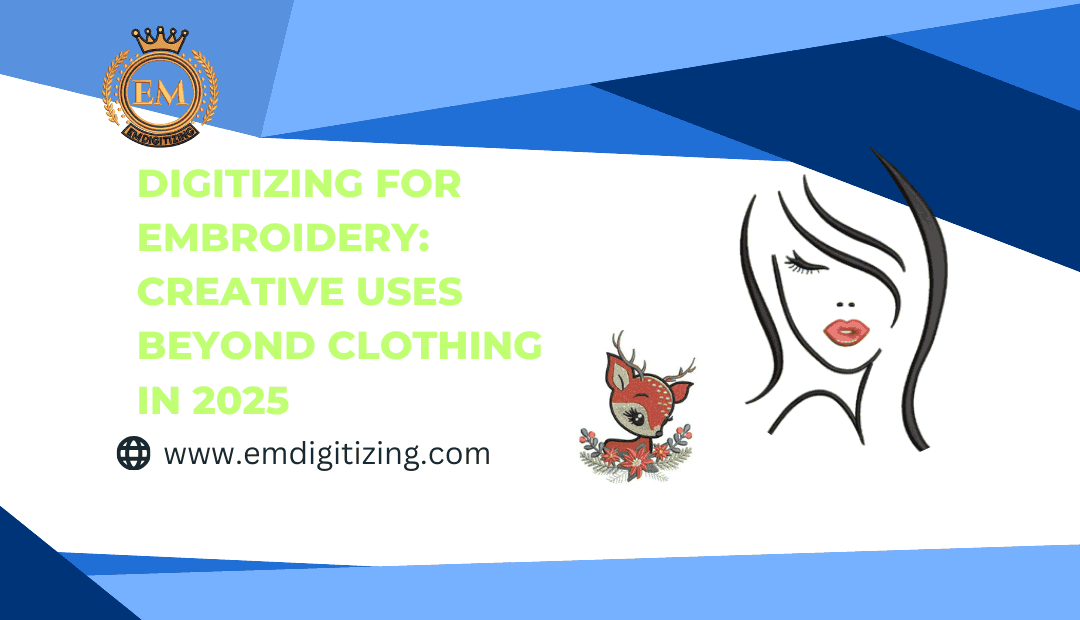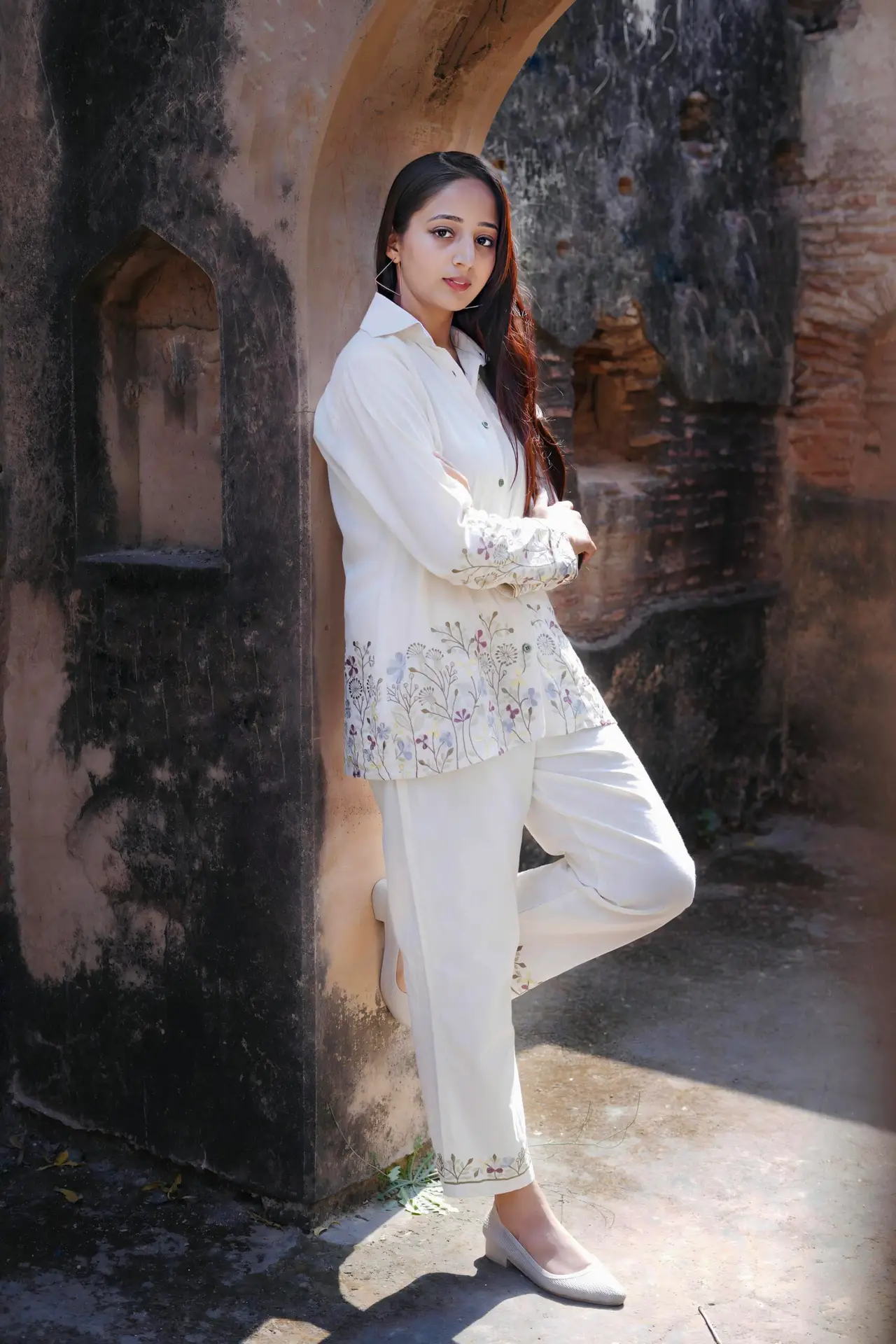When most people hear the term digitizing for embroidery, they imagine logos stitched on uniforms, names embroidered on jackets, or decorative stitching on shirts. But embroidery digitizing isn’t limited to apparel. In fact, its creative potential stretches far beyond clothing, transforming everyday objects into personalized, professional, and artistic masterpieces.
In this blog, we’ll explore how digitizing for embroidery can be applied to products outside the fashion world, why it’s gaining popularity in new industries, and some trending ideas for 2025.
What Is Digitizing for Embroidery?
Digitizing for embroidery is the process of converting artwork, logos, or designs into a stitch file that an embroidery machine can read. It determines stitch type, direction, and density to ensure the design comes out clean, precise, and professional.
While this technology has long been used for apparel, recent trends have expanded its reach into home décor, corporate branding, event merchandise, and even art pieces.
Why Look Beyond Clothing?
There are three main reasons businesses, artists, and crafters are looking beyond traditional clothing embroidery:
- Market Differentiation – Offering embroidery on unique items sets you apart from competitors.
- Higher Profit Margins – Non-clothing embroidery products often have lower production costs but can be sold at premium prices.
- Personalization Demand – Customers love owning or gifting personalized items that stand out.
Creative Uses of Digitizing for Embroidery Beyond Clothing
1. Home Décor and Interior Design
- Embroidered Cushions & Pillows – Add monograms, floral designs, or even family crests to give a luxurious feel.
- Table Runners & Placemats – Perfect for weddings, events, or upscale dining settings.
- Wall Hangings – Artistic embroidery pieces framed as wall art are becoming a huge trend in 2025.
2. Corporate Branding Merchandise
Companies are now turning to digitizing for embroidery to brand more than just uniforms:
- Embroidered Tote Bags – Functional and reusable, making them ideal for promotional events.
- Laptop Sleeves – Adds a touch of professionalism to tech gear.
- Conference Giveaways – Embroidered caps, hand towels, or pouches with brand logos create lasting impressions.
3. Special Event Keepsakes
Personalized embroidered items make events more memorable:
- Wedding Handkerchiefs – With initials or meaningful dates.
- Baby Blankets – Custom embroidered with names and birthdates.
- Graduation Stoles – Embellished with school crests and graduation years.
4. Art and Craft Projects
Many artists now combine digitizing for embroidery with other art forms:
- Mixed Media Artwork – Combining embroidery with painting or printing.
- Custom Patches – Used for biker clubs, scout groups, or collectible purposes.
- Themed Quilts – Where each square contains a unique embroidered design.
5. Accessories and Lifestyle Products
Fashion doesn’t end at clothing:
- Embroidered Hats and Caps – Still wearable but not categorized as typical apparel.
- Keychains & Luggage Tags – Functional and stylish.
- Phone Cases – Embroidery over fabric-covered cases adds a unique texture.
How Digitizing for Embroidery Changes the Creative Process
When you move beyond clothing, digitizing requires special considerations:
- Material Type – Leather, canvas, felt, and linen each behave differently when stitched.
- Design Scaling – Non-clothing items may require smaller or larger embroidery designs than typical garments.
- Durability – Some items (like tote bags) need reinforced stitching for longevity.
Industry Trends in 2025
Here’s how the non-clothing embroidery industry is evolving:
- Sustainable Materials – Eco-friendly fabrics like hemp and organic cotton are in high demand.
- 3D Puff Embroidery – Adds texture to accessories like hats and home décor.
- Glow-in-the-Dark Thread – Popular for children’s products and event giveaways.
- Metallic Threads – Used in luxury home décor and high-end branding.
Why Businesses Should Consider Expanding Beyond Apparel
If you’re running an embroidery business, sticking only to clothing can limit your growth potential. By applying digitizing for embroidery to other items:
- You tap into new markets like weddings, home décor, and corporate gifts.
- You increase product variety, which can boost customer retention.
- You position yourself as a creative leader in the industry.
Tips for Success in Non-Clothing Digitizing for Embroidery
- Choose the Right Backing – Non-fabric surfaces may require special stabilizers.
- Test Before Production – Always sample stitch designs to avoid costly mistakes.
- Work with a Professional Digitizer – Complex designs require precision to ensure quality.
Conclusion
Digitizing for embroidery is no longer just about clothing — it’s about transforming ordinary objects into works of art, marketing tools, or sentimental keepsakes. Whether it’s a luxury pillow, a personalized baby blanket, or a branded tote bag, the possibilities are endless.
For businesses and creators, expanding into these creative uses can open new revenue streams and strengthen customer loyalty. If you’re ready to explore the full potential of embroidery digitizing, Emdigitizing offers expert services to bring your creative ideas to life.
FAQs
Q1. Can digitizing for embroidery be done on non-fabric materials?
Yes, embroidery can be done on leather, felt, and other materials with the right needle and machine settings.
Q2. Is digitizing for embroidery expensive for small projects?
Not necessarily—many services offer affordable rates for small, personalized designs.
Q3. Can I digitize my own artwork for embroidery?
Yes, as long as it’s a clear design, it can be digitized for embroidery with professional software or services.



